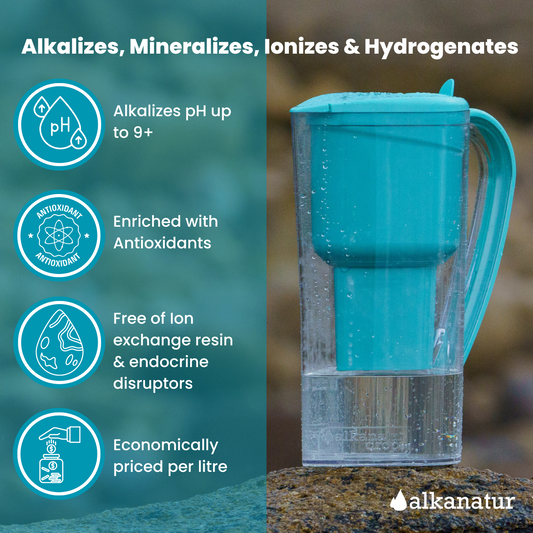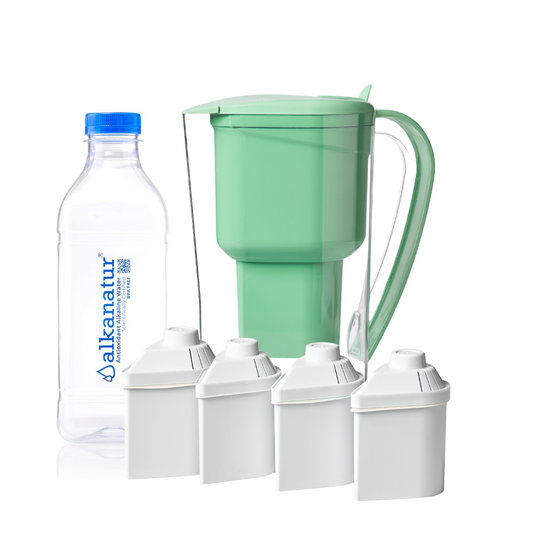Winter break is coming up, and it's the perfect time to spark your kids' curiosity and ignite a love for science. At Alkanatur, we know that with a few simple kitchen ingredients and a bit of imagination, you can transform your home into a mini science lab!
Why Alkaline Water?
Alkaline water, with its higher pH level, can add an interesting twist to many scientific experiments. It can react differently with certain substances, leading to unique and fascinating results. So grab your Alkanatur pitcher, and let's dive in!
Experiment 1: Volcanic Fun
Materials:
- A small plastic bottle
- Baking soda
- Vinegar
- Food dye
- Liquid dish soap
- Alkaline water
Instructions:
- Fill the plastic bottle halfway with alkaline water.
- Add a few drops of food dye to the water.
- Add a squirt of liquid dish soap.
- Mix in a few tablespoons of baking soda.
- Finally, pour in some vinegar.
- Watch as your volcano erupts with a foamy, colorful mixture!
Experiment 2: Magical Crystals
Materials:
- Borax
- Pipe cleaners
- Food dye
- Alkaline water
- Clear glass jars
Instructions:
- Shape pipe cleaners into shapes like snowflakes or stars.
- Mix borax and alkaline water in a jar or bowl.
- Add a few drops of food dye to the solution.
- Submerge the pipe cleaner shapes into the solution.
- Let it sit overnight.
In the morning, you'll find beautiful crystal formations on your pipe cleaner shapes. The alkaline water creates a high pH environment, which fosters the growth of crystals, as well as helping with their clarity and sparkle.
Experiment 3: Mesmerizing Milk
Materials:
- Whole milk
- Food dye
- Liquid dish soap
- Cotton swabs
- A shallow dish
- Alkaline water
Instructions:
- Pour milk in a shallow dish.
- Add a few drops of food dye to the milk. Use more than one colour!
- Dip a cotton swab into liquid dish soap.
- Gently touch the tip of the cotton swab to the surface of the milk.
Watch as the colors swirl and mix, creating mesmerizing patterns. Using alkaline water instead of tap water should enhance the brightness of the colours, and enhance the reactivity of the milk proteins. The core principle of the experiment is the interaction of the proteins and the surfactants in the dish soap.
Learning Through Playtime
These experiments are not only fun but also educational. They help children learn about chemical reactions, pH levels, and the properties of various substances. By engaging in hands-on activities, they can develop a strong foundation in science and a lifelong love for learning.
So, this winter break, grab your lab coat (or a cozy sweater) and get ready for some fun. Remember, the most important ingredient is curiosity. Happy experimenting, friends!
Alkanatur Alkaline Water Filter Pitcher with Magnesium & Antioxidants – Alkanatur North America
pH Reactive Drops (Reagent) - pH Testing Made Easy – Alkanatur North America









